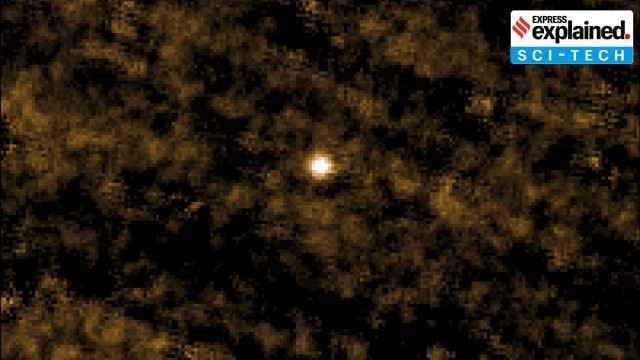Description

Source: Hindu
Disclaimer: Copyright infringement not intended.
Context
- Researchers have reported groundbreaking results in the study of plutonium-240 (Pu-240) fission.
- This marks the first attempt to measure the prompt fission neutron spectrum (PFNS) of induced fission in Pu-240 with neutrons of energy greater than 0.85 MeV.
- The findings reveal significant deviations from model predictions, impacting reactor design, radiation shielding, and nuclear medicine.
Details
- A part of the fission energy carried away by neutrons is called the prompt fission neutron spectrum.
- ‘Prompt’ stands for neutrons Pu-240 might emit right after it has captured a neutron with the energy to destabilise it
- Pu-240 undergoes spontaneous fission, and emits alpha particles.
- The isotope is considered a contaminant of weapons-grade plutonium, where its composition by weight is restricted to under 7%
Experimental Setup
- Location: Los Alamos Neutron Science Centre (LANSCE)
- Setup: A tungsten disc bombarded by proton pulses produces neutrons (0.01-800 MeV).
- Detector: Liquid scintillators arranged around a 20-milligram, 99.875% pure Pu-240 sample detect the emitted neutrons and other fission products.
- Neutron Energy: 1-20 MeV
- Data Extraction: Careful subtraction of contributions from spontaneous fission and alpha particles to isolate PFNS data.
Findings
- PFNS Differences: Observed PFNS deviated notably from model predictions.
- Second-Chance Fission: Higher-than-expected rates of second-chance fission in Pu-240, indicating a nucleus becomes fissionable after losing a neutron.
- Third-Chance Fission: Signs of a smaller contribution from third-chance fission, though difficult to observe directly.
Relevance to Nuclear Technology and Research
Reactor Design and Safety
- Plutonium Utilization: Information crucial for reactors using MOX fuel and fast breeder reactors.
- PFBR: Prototype Fast Breeder Reactor at Madras Atomic Power Station, India, using plutonium from CANDU spent fuel.
Radiation Shielding
- Improved PFNS data enhances accuracy in designing radiation shielding.
Nuclear Medicine
- More precise neutron emission data aids in calculating radiation doses for medical applications.

Nuclear Fission
- Nuclear fission is a nuclear reaction in which the nucleus of an atom splits into two or more smaller nuclei, along with the release of a significant amount of energy.
- This process is fundamental to both nuclear power generation and nuclear weapons.
- Energy Release: The process releases a tremendous amount of energy due to the conversion of mass into energy, as described by Einstein's equation E=mc2E=mc2.
Key Elements Involved
- Fissile Materials: Substances that can undergo fission, such as Uranium-235 and Plutonium-239.
- Neutrons: Neutrons play a crucial role in initiating and sustaining the fission process.
Mechanism of Nuclear Fission
- Neutron Absorption: A heavy nucleus absorbs a neutron.
- Nucleus Becomes Unstable: The nucleus becomes highly unstable and deforms.
- Splitting of the Nucleus: The nucleus splits into two or more smaller nuclei (fission fragments), releasing additional neutrons and energy.
- Sustained Chain Reaction: Each fission event releases more neutrons, which can induce further fission events.
- Critical Mass: The minimum amount of fissile material needed to maintain a self-sustaining chain reaction.
Applications of Nuclear Fission
- Nuclear Reactors: Devices used to control nuclear fission to produce energy.
- Components: Core, fuel rods, control rods, coolant, and moderator.
- Types of Reactors: Pressurized Water Reactors (PWR), Boiling Water Reactors (BWR), Fast Breeder Reactors (FBR).
- Energy Production: Fission heats water to create steam, which drives turbines to generate electricity.
- Atomic Bombs: Weapons that use uncontrolled fission reactions to release enormous destructive energy.
- Designs: Gun-type (e.g., Hiroshima's "Little Boy") and implosion-type (e.g., Nagasaki's "Fat Man").
Plutonium
- Plutonium is a radioactive chemical element with the symbol Pu and atomic number 94.
- It is a key material in nuclear chemistry, with significant applications in nuclear power generation and nuclear weapons.
- Discovery: Plutonium was discovered in 1940 by a team led by Glenn T. Seaborg at the University of California, Berkeley.
- Naming: Named after the dwarf planet Pluto, following the tradition of naming elements after celestial bodies.
- Atomic Weight: Approximately 244
- Appearance: Silvery-gray metal that tarnishes in air
- Reactor-Grade vs. Weapons-Grade: Reactor-grade plutonium contains more than 19% Pu-240, while weapons-grade plutonium contains less.
Chemical and Physical Characteristics
Physical Properties
- Phases: Exhibits six different allotropes at various temperatures.
- Density: Approximately 19.86 g/cm³
- Melting Point: 639.4 °C
- Boiling Point: 3,228 °C
Chemical Reactivity
- Oxidation States: +3, +4, +5, and +6; most stable in the +4 oxidation state.
- Compounds: Forms oxides (PuO2), halides, and other compounds.
Isotopes of Plutonium
- Plutonium-239 (Pu-239): Most important isotope, used in nuclear reactors and weapons.
- Plutonium-238 (Pu-238): Used as a heat source in radioisotope thermoelectric generators (RTGs).
- Pu-239: Half-life of 24,100 years, fissile material.
- Pu-238: Half-life of 87.7 years, emits alpha particles, not fissile.
Production of Plutonium
- Plutonium is present in trace amounts in uranium ores but is predominantly a man-made element.
- Nuclear Reactors: Produced by neutron capture in uranium-238, followed by beta decay.
- Chemical Separation: Plutonium is chemically separated from spent nuclear fuel through processes like PUREX (Plutonium Uranium Redox EXtraction).
Applications of Plutonium
- Mixed Oxide (MOX) Fuel: Plutonium oxide mixed with uranium oxide, used in nuclear reactors to generate electricity.
- Implosion-Type Bombs: Plutonium-239 is used in the core of nuclear weapons, e.g., the "Fat Man" bomb dropped on Nagasaki.
- RTGs: Plutonium-238 used to provide power for spacecraft and rovers (e.g., Curiosity rover, Voyager probes).
Sources:
Hindu
|
PRACTICE QUESTION
Q. Plutonium is a critical element in nuclear science with diverse applications in energy, defense, and space exploration. Discuss. (10 marks)
|












